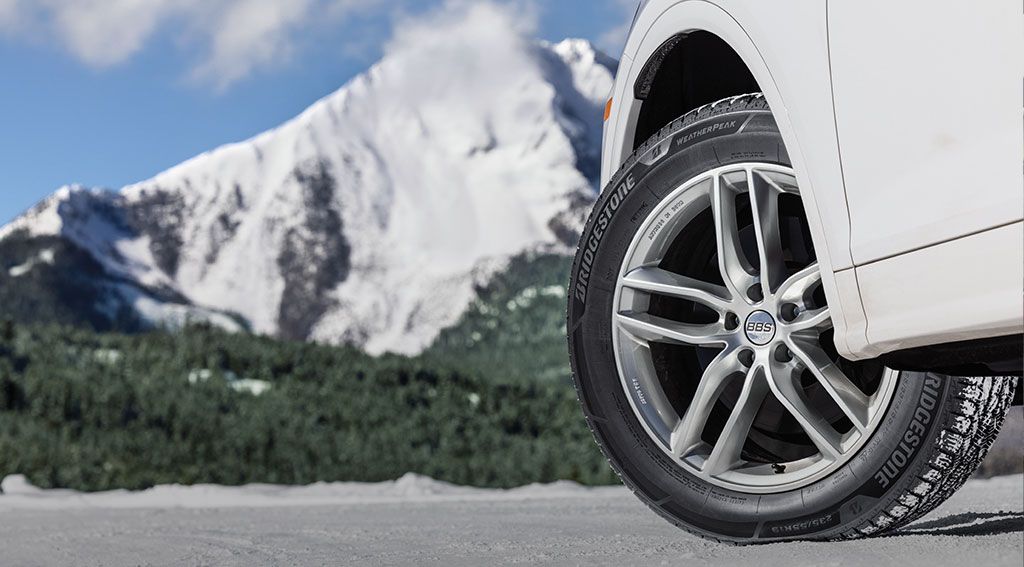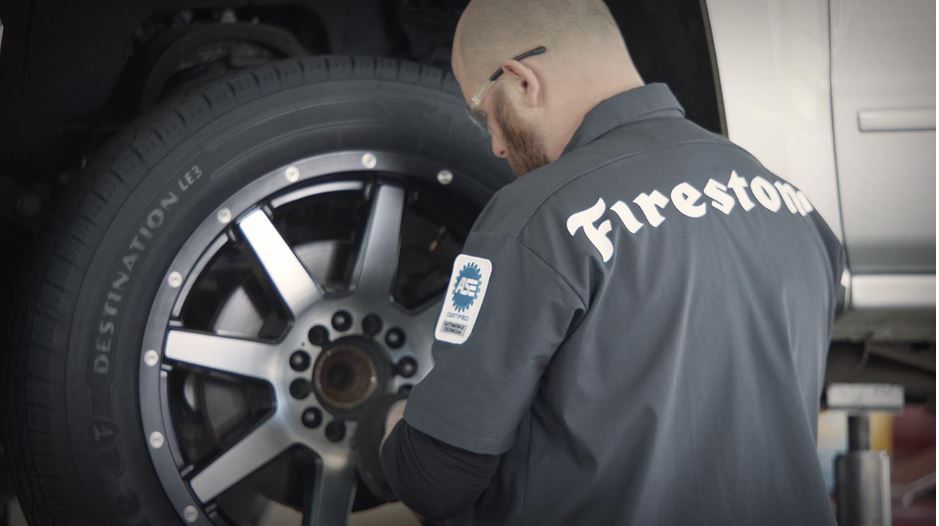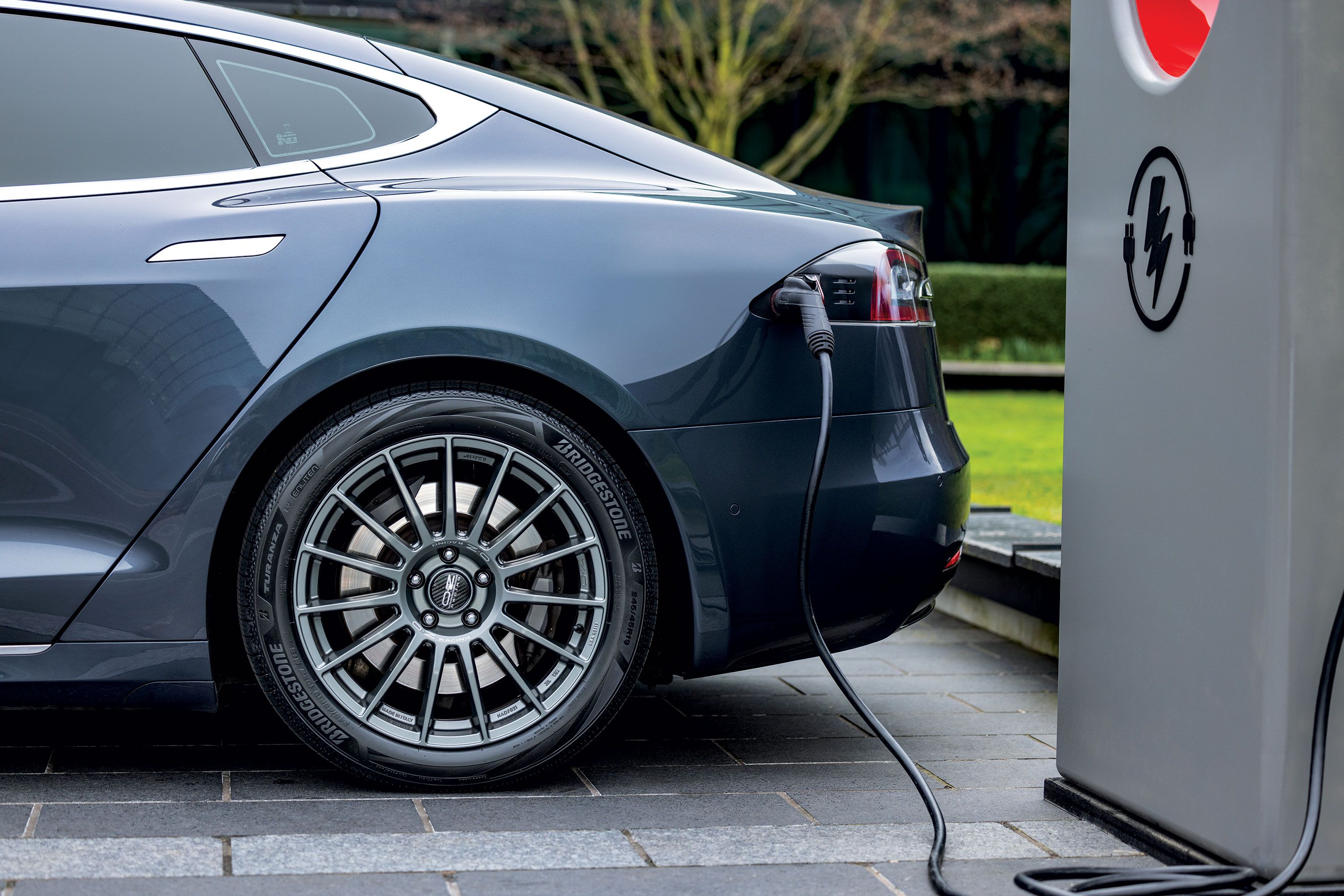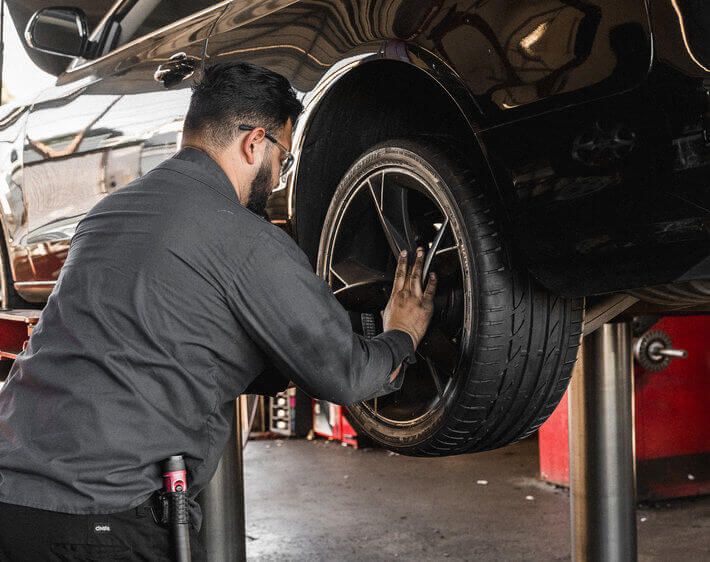Winter conditions mean that the tires on your vehicle can be the deciding factor between a safe journey and a treacherous one. But how do you know which winter-season tires are best for you, and are studded tires better than snow tires? Read on to learn about the differences, benefits, and legal considerations of these two types of winter tires so you can make the right decision for your ride.
What’s the Difference? Studded Snow Tires vs Studless Snow Tires
Before we dive into which type of winter tire is best for your vehicle, let’s explain the difference between studded and studless snow tires.
Intuitively, studded tires are exactly that—tires with small metal or tungsten studs in their tread. These studs bite into packed snow and solid ice, improving traction, grip, and control in even the most challenging winter conditions.
As you might imagine, studless snow tires don’t feature studs. Instead, they are formulated from advanced rubber compounds and utilize tread designs that bite into snow and channel it away from the tire for enhanced traction in winter conditions.
Studded vs Studless Snow Tires: Pros and Cons
We often get the question, “Are studded tires better than winter tires?” The answer isn’t quite as simple as a yes or a no — in some cases, they are; in others, they aren’t. Ultimately, it depends on your use scenario. Let’s dive into the pros and cons of each so that you can choose the best type of winter tire for your vehicle.
Studded Winter Tires
Studded winter tires have exceptional traction on ice and hard-packed snow. You can think of the studs on these tires like the cleats on football or track footwear. They physically bite into the material they ride on, offering practically unbeatable grip and skid resistance on packed snow and icy roads.
- Limited Seasonal Use: Due to the potential damage studded tires can cause, they are restricted in certain seasons or banned entirely in many regions of the US. Always check your local laws to see if the use of studded tires is permitted in your area.
- Potential Road Damage and Noisiness: While a bunch of tiny metal studs or tungsten spikes sticking out of your tires may result in nearly unmatched ice performance, they rarely make the most versatile tire. On dry or wet roads, the studs on this type of tire can not only create a ton of noise as they scrape against the road, but they can also damage the road itself, resulting in potholes and increased road maintenance costs.
- Reduced Performance in Dry Conditions: Traction on dry roads relies on rubber-road surface area, so the spikes of studded tires aren’t an optimal design for dry conditions. On the contrary, they can compromise handling and braking, as the studs aren’t as grippy as rubber and elevate the tire’s rubber off of the road.
Studless Winter Tires
In contrast to studded winter tires, studless options are often more versatile and better suited for a variety of winter conditions, from snow and slush to icy patches and even cold, dry climates. They also tend to provide a more comfortable, quieter ride on dry or cleared roads.
Additionally, from a road-wear standpoint, studless tires are just like a normal tire. When riding studless, you won’t have to worry about damaging the roads you drive on. And since they don’t bring the same harm to streets and motorways, studless tires are not subject to the same legal restrictions as studded tires, allowing for worry-free driving, no matter the state you drive in.
Modern, advanced tire compounds have greatly reduced the gap in performance that once was between studded and studless winter tires, leaving the latter (studless winter tires) to be arguably the better option when choosing between the two. And although premier, studless winter tires tend to come with a relatively larger price tag than studded options, their benefits far outweigh any cons they may have.
Bridgestone Blizzak vs Studded Tires
Viewed through a lens of convenience, comfortability, and convenience, it’s easy to see that studless tires have the advantage over studded tires in all but the most extreme of conditions. But what tire do you pick when you want to weather extreme conditions as comfortably as possible? We think that the Bridgestone Blizzak DM-V2 tires are the way to go. Here’s where the Blizzak shines:
- Optimized Contact Patch: Bridgestone Blizzak DM-V2 tires allow their pliable rubber compound to reach the road and keep you there, giving you the ultimate control in wintry conditions.
- Adaptive NanoPro Tech Multicell™ Compound: This exceptional rubber compound features microscopic bite particles and a hydrophilic coating. The coating is designed to wick water off the tire's surface, ensuring solid braking in snow and ice, while the bite particles offer optimal grip, and thus, improved braking in icy conditions.
- Aggressive Block Edges: Bridgestone Blizzaks' tread blocks feature aggressive edges, which help them bite into the snow for added grip.
- NanoPro-Tech™: The hydrophilic properties of Bridgestone Blizzaks help create friction when water is present, proving confident stopping power on snow and ice.
Sold on Bridgestone Blizzaks? Get tire pricing for your make and model here.
Get a Grip on Winter Conditions with Firestone Complete Auto Care
When it's time to equip your vehicle for winter, trust the professionals at your local Firestone Complete Auto Care for all your tire needs. Our dedicated technicians can help you select the right tires and ensure they are installed correctly for optimal safety and performance. Schedule an appointment online today!



